Stocks got their pop with a strong surge on the open. Even though stocks closed higher, I was not impressed with post-gap price action. In addition, notice that indecisive candlesticks formed in a number of stocks and ETFs. The charts below show SPY and QQQ forming small black candlesticks with equal upper and lower shadows. IWM ad XLY formed doji to signal indecision. This short-term stall is a concern, but the gap is holding and remains bullish until filled. I am also concerned that the sharp rise in the 10-year Treasury Yield ($TNX) could weigh on stocks. While yields and stocks have been positively correlated, the recent rise in rates is looking extreme and may give stocks reason to pause.


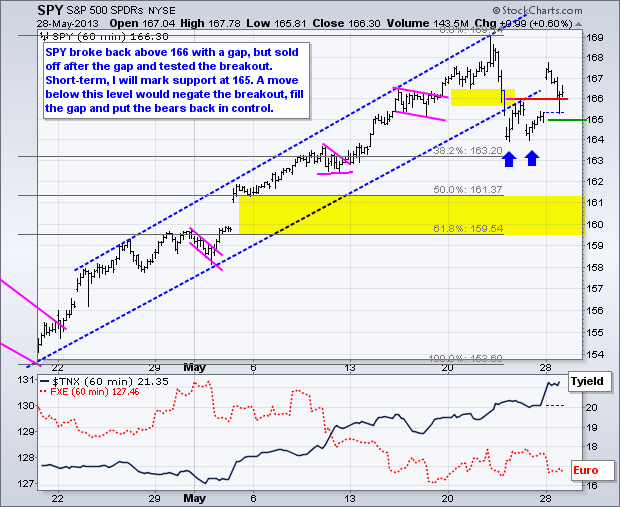
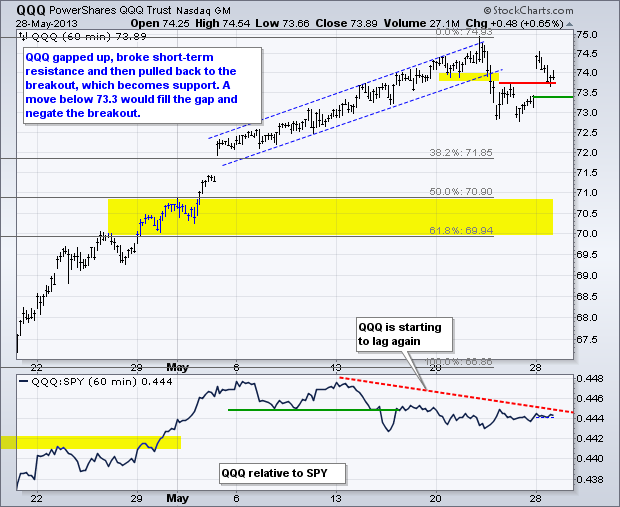
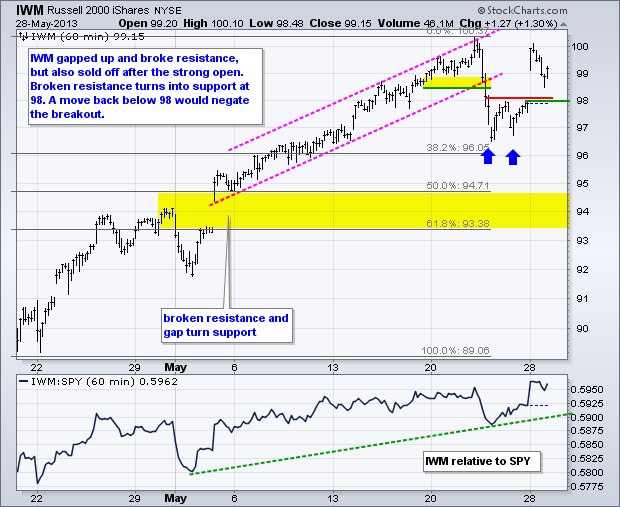
**************************************************************************
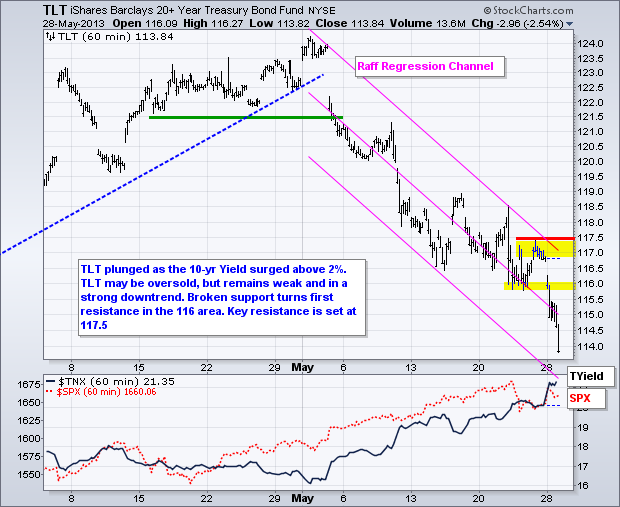
**************************************************************************
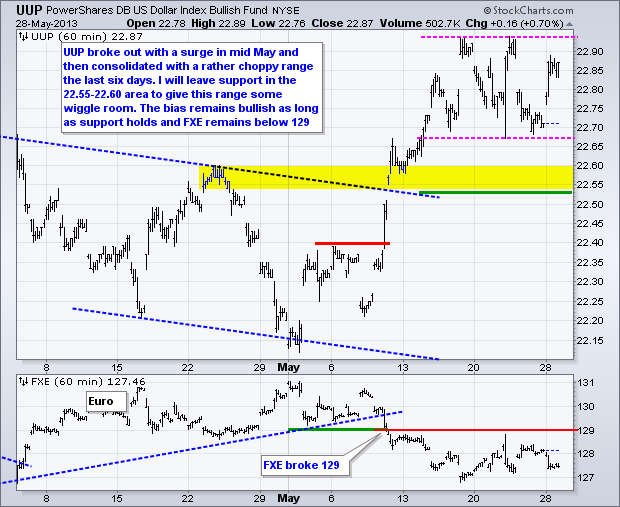
**************************************************************************
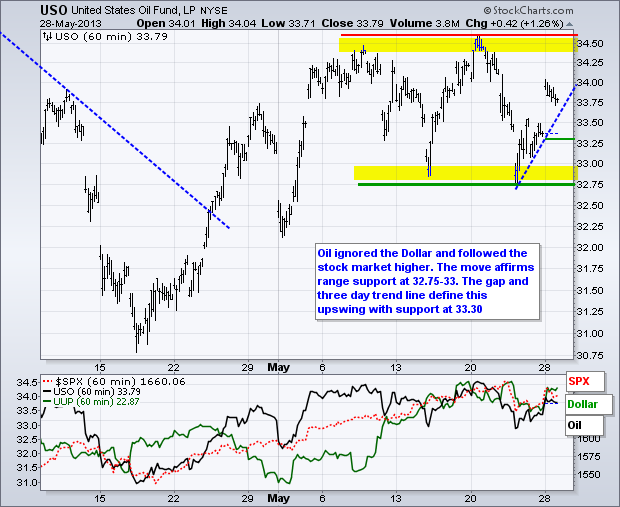
**************************************************************************

**************************************************************************
Key Reports and Events (all times Eastern):
Wed - May 29 - 07:00 - MBA Mortgage Index
Thu - May 30 - 08:30 - Jobless Claims
Thu - May 30 - 08:30 - GDP
Thu - May 30 - 10:00 - Pending Home Sales
Thu - May 30 - 10:30 - Natural Gas Inventories
Thu - May 30 - 11:00 - Oil Inventories
Fri - May 31 - 08:30 - Personal Income & Spending
Fri - May 31 - 09:45 - Chicago PMI
Fri - May 31 - 09:55 - Michigan Sentiment
Charts of Interest: Tuesday and Thursday
This commentary and charts-of-interest are designed to stimulate thinking. This analysis is
not a recommendation to buy, sell, hold or sell short any security (stock ETF or otherwise).
We all need to think for ourselves when it comes to trading our own accounts. First, it is
the only way to really learn. Second, we are the only ones responsible for our decisions.
Think of these charts as food for further analysis. Before making a trade, it is important
to have a plan. Plan the trade and trade the plan. Among other things, this includes setting
a trigger level, a target area and a stop-loss level. It is also important to plan for three
possible price movements: advance, decline or sideways. Have a plan for all three scenarios
BEFORE making the trade. Consider possible holding times. And finally, look at overall market
conditions and sector/industry performance.

About the author:
Arthur Hill, CMT, is the Chief Technical Strategist at TrendInvestorPro.com. Focusing predominantly on US equities and ETFs, his systematic approach of identifying trend, finding signals within the trend, and setting key price levels has made him an esteemed market technician. Arthur has written articles for numerous financial publications including Barrons and Stocks & Commodities Magazine. In addition to his Chartered Market Technician (CMT) designation, he holds an MBA from the Cass Business School at City University in London.
Learn More





